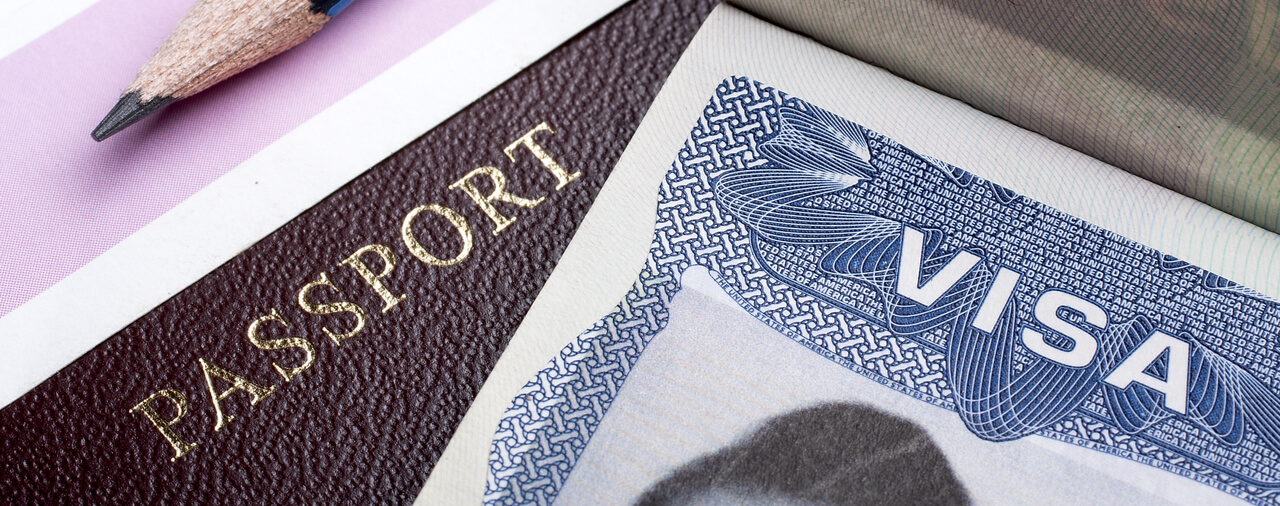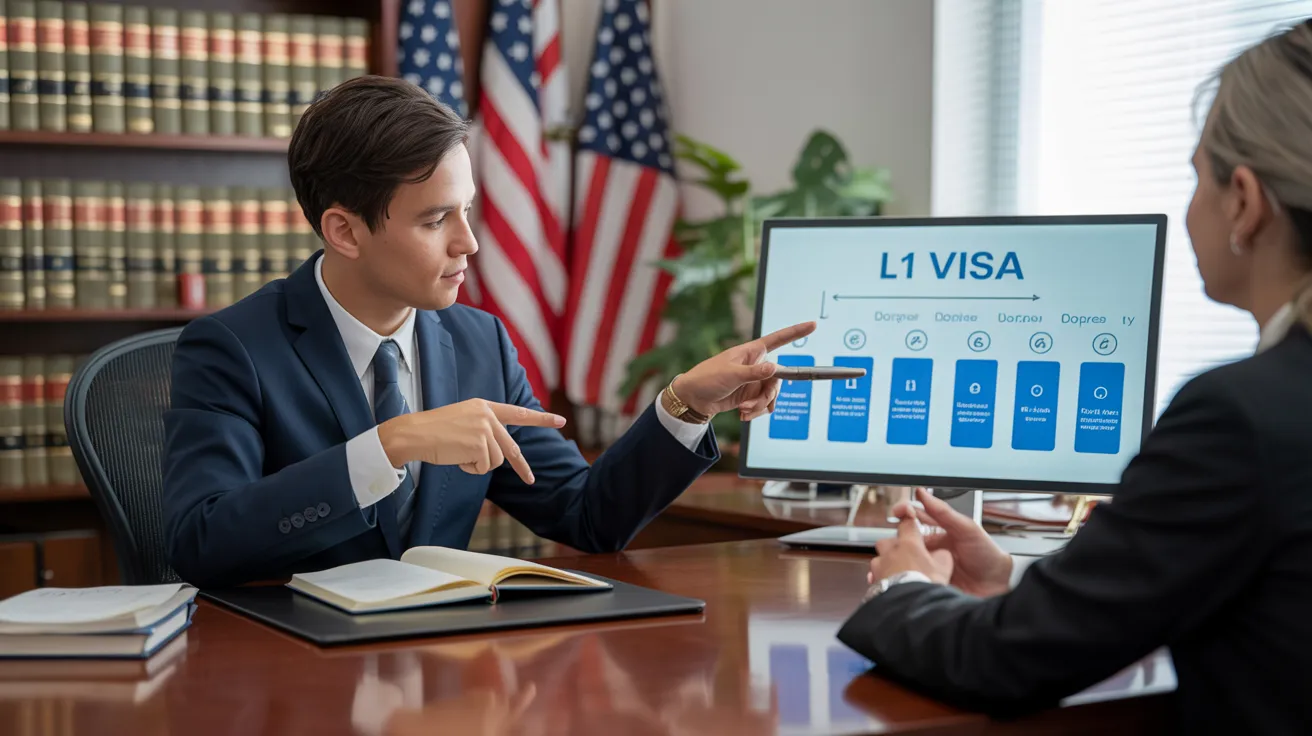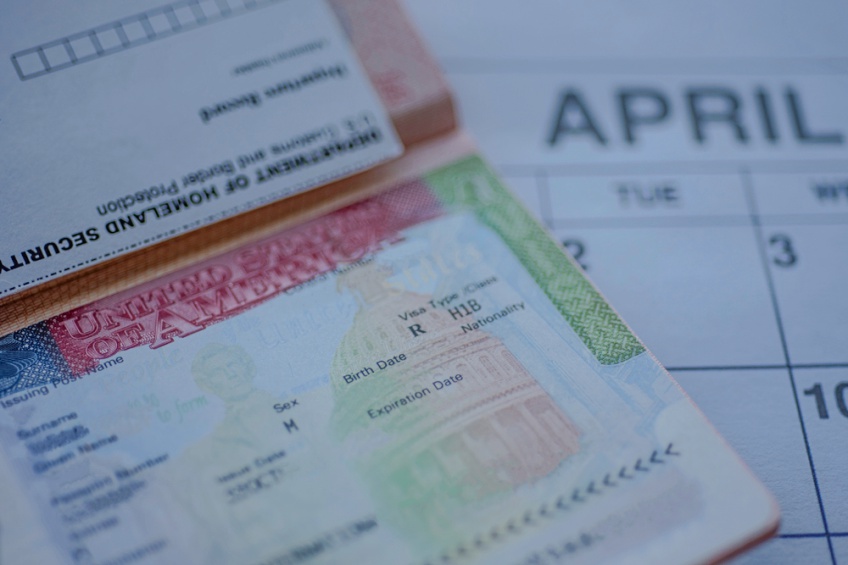Unlocking Opportunities: A Comprehensive Overview to the L1 Visa Process
The L1 visa process presents a vital path for international firms seeking to transfer key staff members throughout borders. Comprehending the subtleties of eligibility standards, the differences between L-1A and L-1B visas, and the ins and outs of the application process can considerably influence a candidate's success. Navigating this complex landscape is not without its obstacles, and mindful focus to paperwork and company sponsorship is vital. As we explore the key components of this procedure, the approaches for overcoming possible challenges will come to be evident, disclosing just how notified preparation can open up a globe of possibilities.
Comprehending the L1 Visa
Comprehending the L1 visa requires identifying its value as an important device for multinational business seeking to transfer skilled employees between worldwide offices. This non-immigrant visa classification facilitates the activity of executives, managers, and specialized understanding employees to the USA, thereby enabling companies to maintain functional continuity and harness international ability efficiently. The L1 visa is divided right into two primary classifications: L-1A for supervisors and executives, and L-1B for staff members possessing specialized knowledge.The L1 visa offers an important function in enhancing a firm's affordable side in the global marketplace - L1 Visa. By allowing business to transfer their essential workers, companies can guarantee that crucial projects are taken care of by certified individuals that are currently aware of the business's culture and functional processes. This internal transfer mechanism not only fosters knowledge sharing however also advertises advancement and cooperation across borders.Moreover, the L1 visa is commonly favored for its reasonably uncomplicated application process contrasted to various other visa categories, as it enables dual intent, allowing holders to seek permanent residency while on a short-term copyright. This feature makes the L1 visa specifically appealing for both companies and employees, as it simplifies the path for competent experts to establish long-term residency in the USA
Qualification Criteria
Eligibility for the L1 visa pivots on a number of vital criteria that guarantee both the staff member and the employer fulfill certain qualifications. This non-immigrant visa is made for international companies to transfer employees from foreign workplaces to U.S. counterparts.Firstly, the company needs to be a qualifying organization, that includes a parent company, branch, affiliate, or subsidiary of a united state business. The company needs to have been doing business for a minimum of one year both in the united state and abroad. This ensures that the company has enough functional stability and a genuine presence.Secondly, the employee should hold a managerial, executive, or specialized knowledge placement. For L1A visas, the applicant needs to show managerial or executive qualifications, while L1B visas focus on specialized knowledge relevant to the company's items, services, or processes. Furthermore, the worker has to have worked for the foreign entity for at least one continual year within the last 3 years prior to their application.Lastly, the staff member's role in the U.S. must straighten with their previous placement, guaranteeing that their skills and proficiency are leveraged for the company's advantage.
Types of L1 Visas
The L1 visa category consists of two primary kinds developed to facilitate the transfer of staff members within multinational firms: the L1A visa for supervisors and execs, and the L1B visa for staff members with specialized expertise. Each kind serves distinct functions and has particular qualification criteria.The L1A visa is tailored for people that hold managerial or executive placements within a business. This visa makes it possible for high-level staff members to move to an U.S. branch, subsidiary, or associate of the same company. Candidates for the L1A visa have to show that they have been used in a supervisory or executive capability for at the very least one constant year within the previous three years before their application. Furthermore, this visa provides a much longer duration of remain, at first given for 3 years, with the possibility of extensions for as much as seven years.In comparison, the L1B visa is planned for experts with specialized knowledge pertaining to the firm's items, services, or processes. To certify, applicants need to verify that their competence is critical to the organization and that they have functioned for a minimum of one continuous year within the last three years in a role that required this specialized knowledge. The L1B visa is at first approved for 3 years, with extensions offered for up to 5 years.Both visa types are necessary for firms seeking to enhance their international procedures by leveraging competent employees, therefore promoting advancement and efficiency within the united state market.
Application Process
Steering with the L1 copyright process includes a number of vital steps that should be thoroughly followed to guarantee an effective outcome. The process begins with the U.S. company, who have to initially establish qualification by showing a certifying partnership with the international entity and verifying that the worker meets the specific needs for the L1 visa classification being sought.Once eligibility is verified, the company launches the procedure by submitting Form I-129, the Application for a Nonimmigrant Employee, with the U.S. Citizenship and Migration Services (USCIS) This form should be gone along with by an in-depth summary of the task responsibilities to be performed, the business framework of both the united state and international entities, and the staff member's qualifications. It's important to confirm that all info is accurate and total, as noninclusions or mistakes can bring about delays or denials.Upon authorization of the I-129 application, the following action includes the employee getting the L1 visa at an U.S. consular office or consular office in their home country. This phase calls for the conclusion of Kind DS-160, the Online Nonimmigrant copyright, and setting up an interview. Throughout the interview, the applicant must offer evidence supporting their qualifications and the employer's petition.After the visa is provided, the staff member can go into the United States to operate in the designated duty. Overall, mindful preparation and adherence to every step of the application process are vital for an effective L1 visa result.
Required Documentation

Essential Forms Required
Maneuvering the L1 Visa process requires careful focus to the essential forms and documentation necessary for a successful application. The primary form needed is the Type I-129, Petition for a Nonimmigrant Worker, which need to be finished and sent by the united state company. This type outlines the information of the work deal and the credentials of the worker seeking the L1 L1 Visa Visa.Alongside Kind I-129, the applicant will require to complete Form I-539 if accompanying relative are also looking for visas. Furthermore, the company must give proof of the qualifying relationship in between the U.S. entity and the international entity, usually necessitating the submission of company documents such as write-ups of consolidation or financial statements.Moreover, it is important to consist of the L Classification Supplement to Form I-129, which specifies the sort of L Visa being asked for-- either L-1A for managers and executives or L-1B for staff members with specialized knowledge. Applicants ought to guarantee that all forms are signed and dated suitably, as insufficient entries can lead to delays or denials. Correctly setting up these important forms lays the structure for a smoother L1 copyright procedure.

Sustaining Proof Needs
Supporting documents is important for a successful L1 copyright, as it substantiates the insurance claims made in the petition. Applicants must provide a variety of papers to show qualification for the visa, which is classified right into two key types: proof of the certifying partnership in between the united state and international entities and evidence of the applicant's qualifications.To establish the connection, candidates must send paperwork such as corporate business graphes, monetary declarations, and evidence of ownership. These records validate that the international firm has a certifying relationship with the united state employer, whether as a moms and dad firm, subsidiary, branch, or affiliate.For the applicant's qualifications, important documents consist of a thorough work letter from the foreign employer, detailing the applicant's job title, duties, and period of work. In addition, educational qualifications, such as levels and diplomas, need to be offered to prove the applicant's knowledge in the appropriate area.
Employer Sponsorship Files

Usual Difficulties
Maneuvering the L1 visa procedure offers a number of typical difficulties that candidates ought to recognize. Secret issues commonly include rigorous paperwork requirements, possible delays in processing times, and the need for strict legal conformity. Understanding these obstacles can aid candidates much better prepare and mitigate dangers during their copyright journey.
Documents Requirements
The L1 copyright procedure commonly presents substantial obstacles related to paperwork requirements. Applicants need to offer extensive paperwork to establish eligibility, which can cause confusion and prospective delays. Key papers consist of evidence of a qualifying relationship between the U.S. and international employer, evidence of the applicant's employment background, and comprehensive info about the job duty in the U.S.One common difficulty is collecting adequate evidence to show the nature of the certifying partnership. Firms typically battle to existing clear organizational charts or economic declarations that show the link in between the entities. In addition, making certain that letters of support from employers accurately mirror the applicant's task obligations and certifications is important, as obscure descriptions can result in denials.Another issue occurs from the need for thorough job summaries that line up with the L1 visa classifications. Candidates have to express not only their existing function however additionally their supervisory or specialized understanding obligations clearly. This demands a thorough understanding of both the candidate's position and the regulative language made use of in L1 applications.
Processing Time Hold-ups
Experiencing hold-ups in processing times is a common difficulty faced by L1 visa applicants, frequently leading to stress and uncertainty. Numerous elements add to these delays, consisting of high application volumes, increased scrutiny of applications, and administrative stockpiles within the U.S. Citizenship and Immigration Solutions (USCIS) Candidates may locate that handling times can differ significantly depending upon the solution center handling their application, as each facility has its own work and performance degrees. Additionally, the complexity of the applicant's instance, such as the demand for considerable documentation or information, can additionally prolong wait times.In some circumstances, problems associated with the applicant's current immigration condition or previous visa history may likewise result in added delays, as USCIS might need additional testimonial or information. It is crucial for candidates to stay proactive throughout this period, maintaining open communication with their employers and lawful representatives to address any possible worries promptly.Understanding these handling time obstacles can aid L1 visa applicants get ready for feasible hold-ups and alleviate the effect on their shift and occupation strategies. Persistence and diligence are essential virtues in navigating this complex process.
Legal Compliance Issues
Lots of L1 visa candidates come across lawful compliance problems that can complicate their journey toward obtaining the visa. Understanding and adhering to the particular regulations set by the U.S. Citizenship and Immigration Services (USCIS) is vital. Typical difficulties include showing the certifying partnership between the international and U.S. companies, in addition to proving that the applicant possesses the requisite specialized knowledge or managerial capacity.Additionally, applicants need to offer extensive documents describing their job tasks, company structure, and economic viability of the united state entity. Insufficient or incorrect documents can result in hold-ups or perhaps rejections. Employers must additionally assure that they adhere to labor legislations, consisting of wage and working condition criteria, which can affect visa eligibility.Another common concern involves maintaining conformity with the regards to the visa as soon as given. Changes in work condition, task obligations, or company structure can require modifications to the visa, which otherwise attended to promptly can result in lawful problems. Therefore, remaining notified concerning compliance demands and looking for lawful advise when required is necessary to navigate the intricacies of the L1 visa procedure successfully.
Tips for Success
Success in the L1 copyright procedure commonly pivots on thorough prep work and focus to detail. To enhance your chances of approval, start by thoroughly comprehending the eligibility requirements for both the L1A and L1B visa classifications. Evaluate whether your position at the company certifies as managerial, exec, or specialized understanding, as this categorization significantly affects your application.Next, collect comprehensive paperwork that substantiates your cases. This consists of organizational charts, comprehensive job summaries, and evidence of the firm's operational framework. Clear and succinct proof of the qualifying partnership in between the U.S. entity and the international entity is crucial. Verify that all documents are arranged realistically and provided in an expert way, as this shows your commitment and severity concerning the application.Engage the solutions of a knowledgeable immigration attorney that specializes in L1 visas. Their competence can verify important, guiding you through complex regulations and guaranteeing that all documents abides by present legislations. Additionally, plan for the meeting by exercising response to common concerns and preparing to review your role and payments to the company in depth.
Often Asked Questions
Can Family Members Come With the L1 Visa Owner?
Yes, household participants of L1 visa holders, consisting of spouses and single children under 21, can go along with the primary visa holder. They may also make an application for L2 visas, which allow them to stay in the United States.
Exactly How Long Can I Keep on an L1 Visa?
The L1 visa allows first stays of as much as 3 years, with the possibility of expansion. L1A visa owners might remain for an optimum of 7 years, while L1B visa owners can remain for 5 years.
Can L1 Visa Holders Request an Eco-friendly Card?
Yes, L1 visa owners can request a copyright. L1 Visa Requirements. They may pursue permanent residency via employment-based categories, commonly calling for sponsorship from their employer, given they meet the essential credentials and documentation needs
What Occurs if My L1 copyright Is Rejected?
If your L1 copyright is denied, you might receive a notice detailing the reasons for rejection. You can look for to appeal the choice, reapply, or check out alternative visa options based on your scenarios.
Exist Any Type Of Traveling Restrictions With an L1 Visa?
An L1 visa usually enables worldwide traveling; however, re-entry to the united state rests upon maintaining legitimate standing. Travelers must guarantee conformity with visa conditions to stay clear of problems upon return
Verdict
